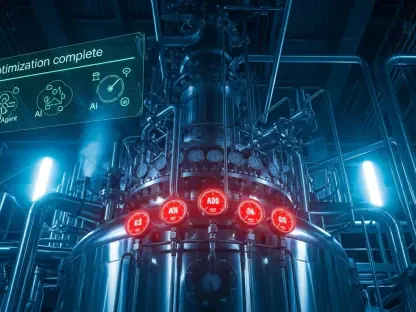The pharmaceutical industry relies heavily on maintaining the integrity of temperature-sensitive products during transportation. With the advent of automation and advanced technologies, the logistics sector has seen significant improvements in ensuring that these critical shipments reach their destinations without compromising their quality. This article delves into how automation is revolutionizing cold chain logistics, enhancing visibility, and ensuring the safe delivery of pharmaceuticals.
The Role of Technology in Cold Chain Logistics
Technological advancements have become indispensable in modernizing cold chain logistics. These innovations provide enhanced visibility and reactivity, which are crucial for managing temperature-sensitive pharmaceutical shipments. Real-time monitoring systems and data analytics tools allow logistics companies to proactively handle risks, ensuring that shipments remain within the required temperature ranges throughout their journey. The integration of IoT devices in cold chain logistics has been a game-changer. These devices continuously monitor the temperature and other environmental conditions of the shipments, transmitting data in real time to centralized systems. This constant flow of information enables logistics managers to detect any deviations from the set parameters immediately and take corrective actions to prevent any potential damage to the pharmaceutical products.
Real-time monitoring coupled with data analytics helps logistics companies predict potential risks and implement measures to mitigate them effectively. By leveraging historical data and predictive algorithms, companies can identify trends and anomalies that could compromise the integrity of the shipments. This proactive approach ensures that potential issues are addressed before they escalate, minimizing the risk of temperature excursions and ensuring that pharmaceutical products maintain their efficacy throughout the supply chain. The use of sophisticated sensors and IoT devices allows for seamless integration with automated systems. These systems can trigger alerts and automated responses in case of any deviations from the desired conditions, ensuring that corrective actions are taken promptly. This level of automation not only enhances the reliability of cold chain logistics but also reduces the reliance on manual interventions, thereby minimizing the chances of human error and improving overall efficiency.
Enhancing Supply Chain Visibility and Reactivity
Increased visibility in the supply chain is one of the most significant benefits brought about by automation. Real-time data allows stakeholders to monitor the status of shipments continuously, providing a clear picture of the entire logistics process. This visibility is crucial for identifying and addressing any issues that may arise during transportation, such as temperature excursions or delays. The ability to react quickly to changes is another critical advantage of enhanced visibility. With real-time data at their fingertips, logistics managers can make informed decisions to adjust routes, manage deviations, and respond promptly to any temperature excursions. This proactive approach helps mitigate risks and ensures that pharmaceutical shipments maintain their integrity throughout the supply chain.
Automation and real-time data analytics facilitate more efficient risk management by enabling logistics managers to identify potential issues and implement corrective measures promptly. For instance, if a shipment is at risk of experiencing a temperature excursion due to a delay, real-time data can help managers reroute the shipment to a faster or more reliable pathway. This level of agility and responsiveness ensures that pharmaceutical products are delivered safely and on time, maintaining their quality and efficacy. Furthermore, enhanced visibility improves accountability and transparency within the supply chain. Stakeholders, including manufacturers, distributors, and healthcare providers, can access real-time information about the status and condition of shipments. This open communication fosters trust and collaboration among all parties involved, ensuring that any deviations or issues are addressed swiftly and effectively. By providing a comprehensive view of the logistics process, automation enables stakeholders to make better-informed decisions and optimize their operations for improved efficiency and reliability.
Automation and Connected Systems
Automation, combined with IoT technologies, has streamlined the management of temperature controls in cold chain logistics. Automated systems can adjust environmental controls in real time, ensuring that the temperature remains within the required range. These systems can also identify equipment issues early, enabling prompt maintenance and minimizing disruptions. Connected software platforms play a vital role in this ecosystem. They provide a centralized platform where all stakeholders can access and share vital information, leading to more informed decision-making and strategic planning. This seamless communication ensures that any deviations from the set parameters are effectively managed, maintaining the integrity of the pharmaceutical shipments.
With the integration of automated systems and IoT devices, the pharmaceutical logistics sector can achieve a higher level of precision and consistency in maintaining temperature integrity. Automated systems continuously monitor and control temperature conditions, making real-time adjustments as needed to ensure that shipments remain within the optimal temperature range. If an issue arises, such as a malfunctioning refrigeration unit, the system can trigger an alert and initiate corrective actions, such as switching to backup equipment or rerouting the shipment. This level of automation not only enhances the reliability of cold chain logistics but also reduces the risk of human error, improving the overall efficiency and effectiveness of the logistics process. Moreover, connected software platforms facilitate seamless communication and collaboration among all stakeholders, from manufacturers to logistics providers and healthcare facilities. These platforms provide real-time access to critical information, enabling stakeholders to monitor the status of shipments, track temperature conditions, and respond to any deviations promptly. This centralized approach streamlines the decision-making process, allowing for quicker and more accurate responses to potential issues. By integrating automation and connected systems, the pharmaceutical logistics industry can ensure that temperature-sensitive products are transported safely and efficiently, maintaining their quality and effectiveness.
Post-Journey Optimizations and Analysis
Post-journey data analysis is essential for optimizing future routes and supply chain plans. By analyzing the temperature behavior of previous shipments, logistics companies can identify patterns and make necessary adjustments to improve the efficiency and reliability of their cold chain logistics. Analytical tools and simulations, such as lane mapping, help determine the best routes and methods to maintain temperature integrity. These tools provide valuable insights into the performance of different routes and transportation methods, enabling logistics managers to make data-driven decisions that enhance the overall efficiency of the supply chain.
Post-journey analysis also allows logistics companies to evaluate the effectiveness of their current strategies and identify areas for improvement. By reviewing the performance of past shipments, companies can pinpoint any recurring issues or bottlenecks and develop targeted solutions to address them. This continuous improvement approach ensures that logistics operations remain agile and responsive to changing conditions, maximizing reliability and effectiveness of the cold chain. Additionally, post-journey data analysis provides valuable feedback that can be used to train and educate all stakeholders involved in the supply chain. By understanding the factors that contribute to successful shipments and those that lead to deviations, stakeholders can develop best practices and guidelines to ensure consistent temperature integrity. This collaborative learning process fosters a culture of continuous improvement and innovation, driving the industry toward higher standards of performance and reliability.
Future Trends and Sustainability
The pharmaceutical industry depends heavily on preserving the integrity of temperature-sensitive products during transport. The rise of automation and advanced technologies has led to significant improvements within the logistics sector, ensuring that these vital shipments maintain their quality during transit. Automation is transforming cold chain logistics, making the transportation process more efficient and reliable.
Temperature-sensitive pharmaceuticals require stringent controls to ensure they arrive safely without any loss of efficacy. Automation helps by providing real-time tracking and monitoring of these products, allowing for immediate action if any issues arise. Technologies like IoT devices and blockchain enhance visibility throughout the supply chain, ensuring that every stage of the transportation process is transparent and accountable.
Furthermore, these advancements lead to better data collection and analysis, which contribute to improving future logistics. Predictive analytics can forecast potential challenges, meaning companies can proactively address issues before they become problematic. This is particularly important for pharmaceutical companies, where a single compromised shipment can have serious health implications and financial repercussions.
In summary, automation is revolutionizing cold chain logistics, offering enhanced oversight and ensuring that temperature-sensitive pharmaceuticals are delivered safely and efficiently. By leveraging these advanced technologies, the pharmaceutical industry can maintain high standards, mitigate risks, and continue to provide critical healthcare products without compromising their quality.









